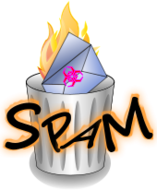Email maintenance

Posted by Paul Babicki
The following is from an article in "the VAR Guy"
Your
Time is Money: Don’t Waste it in E-Mail Hell
Nov. 19, 2013 Elliot Markowitz | Business
Acceleration Infocenter
Most solution providers
are also small-business owners. They have to make sure their current customers
are served, continuously prospect for new business to keep that pipeline full
and run their own organization.There is never enough time in the day, days in week or weeks in the month to get it all done correctly. It’s a never-ending struggle to strike the right balance.
It’s a labor of love, to
say the least, and while most solution providers get the servicing piece down,
they do not spend enough time prospecting or marketing themselves, and they
either are too hands-on, micromanaging the daily running of their business, or
are too hands-off, ignoring problems until it is too late. As business
proprietors, solution providers must evaluate the best use of their time and
then focus on those areas.
One of the biggest
time-sucks for many executives is poor e-mail management. I once worked in an
organization that disabled the “reply all” button in Microsoft Outlook because
it was being abused so badly. E-mail has become a safe way to include too many
people in business activities to make sure nobody is ever left out of the loop.
It is the primary venue for communicating in business today, and with the
permeation of smartphones, 24/7 access is commonplace.
Managing e-mail is an
essential skill. I make it a point to keep my inbox in the 25 e-mail range and
use it more as a “to do” list. If it’s still in my inbox, then the issue is not
resolved. Not cleaning out your inbox, setting up filters or establishing a
filing system will create confusion and inefficiency and waste your valuable
time.
I recently came across an article on Inc.com that outlined seven tips to help people get their email under control. Here is the gist of the advice, with a few more insights:
1. Clear out the junk
e-mail:
Junk e-mails get through even the best spam filters, while legitimate e-mails
can get caught. Go through your spam filter and your junk folder daily to make
sure nothing is in there that shouldn't be. Also, unsubscribe to services and
other newsletters that you don’t remember ever signing up for or you really
don’t read anymore.
2. Create a smart folder
system:
Set up a comprehensive folder system that is easy for you to recognize. Also,
set up smart folders where some emails from pre-determined sources can get
filed automatically, thus uncluttering your inbox. A cluttered inbox is a
non-functional one.
You sell cloud services,
use it yourself: The easiest point of entry into the cloud is e-mail
storage and backup. Use it. It’s secure and efficient and you can search
easier.
4. Enforce a 24-hour
response time: Answer every e-mail within 24 hours. That’s right. That
is the professional thing to do. This doesn’t mean you must find a
comprehensive solution to every problem, but a simple “got it” will stave off
future e-mails reminding you about the same subject. The object is to reduce
volume and clutter, so be responsive.
Don’t abuse “reply all”: Many e-mails start with
a laundry list of interested parties but then wind up being only relevant to
two or three individuals down the road. Take people that are no longer
stakeholders in the project off the e-mail chain. Be respectful to other
people’s time and request to be taken off chains immediately when you no longer
need be involved.
6. Use template signatures: You probably find
yourself typing out the same responses to the same questions. Well, take a
handful of the top five requests you get, create a template response and use
it. These signatures will save you a lot of time and clear email out of your
inbox quicker.
7. Keep it professional and
know when to take it offline: Eighty percent of communication is not
verbal. That flies in the face of e-mail being an effective communications
tool. Know that. People will read into an e-mail and perceive tone and
criticism that, quite frankly, wasn’t meant. Keep your e-mails professional and
not critical. Also, my rule is after three e-mails have been sent regarding a
topic, it’s time to pick up the phone. Arguments over e-mail are never
interpreted correctly and a simple phone call can clear up confusion before it
starts.
Keep the “Subject” line
relevant: Many
e-mail communications twist and turn and start addressing information far
removed from the original communications. Take the time and change the subject
line so the e-mail is more easily recognized and searched. Also, be specific in
your e-mail subject lines so the recipient can prioritize accordingly. The
subject lines, “For you,” or “question” or anything else vague wastes time.Regardless of the widespread use of texting, snap-chatting and backroom communications on social networking sites, e-mail is not going away anytime soon .Take the time to set up your e-mail parameters and etiquette and it will save you time, money and headaches in the future.
====================================
About Netiquette IQ
My book, "Netiquette IQ - A Comprehensive Guide to Improve, Enhance and Add Power to Your Email" has gone on sale at the CreateSpace estore:http://createspace.com/4083121
As a Netiquette IQ blog reader, you can use the discount code KBQALZA7. This discount is only through the estore. Thank you for your support on the blog and with the book. The book and Kindle version are now available on Amazon. Please visit my author profile at
http://www.amazon.com/Paul-Babicki/e/B00FY3GW7S
Also here:
amazon.com/author/paulbabicki
More good news!
The Kindle version of my book is now available! Go to the following site to purchase it:
http://www.amazon.com/dp/B00FFAMN0U
#PaulBabicki
#netiquette

0 Comments:
Post a Comment
Subscribe to Post Comments [Atom]
<< Home